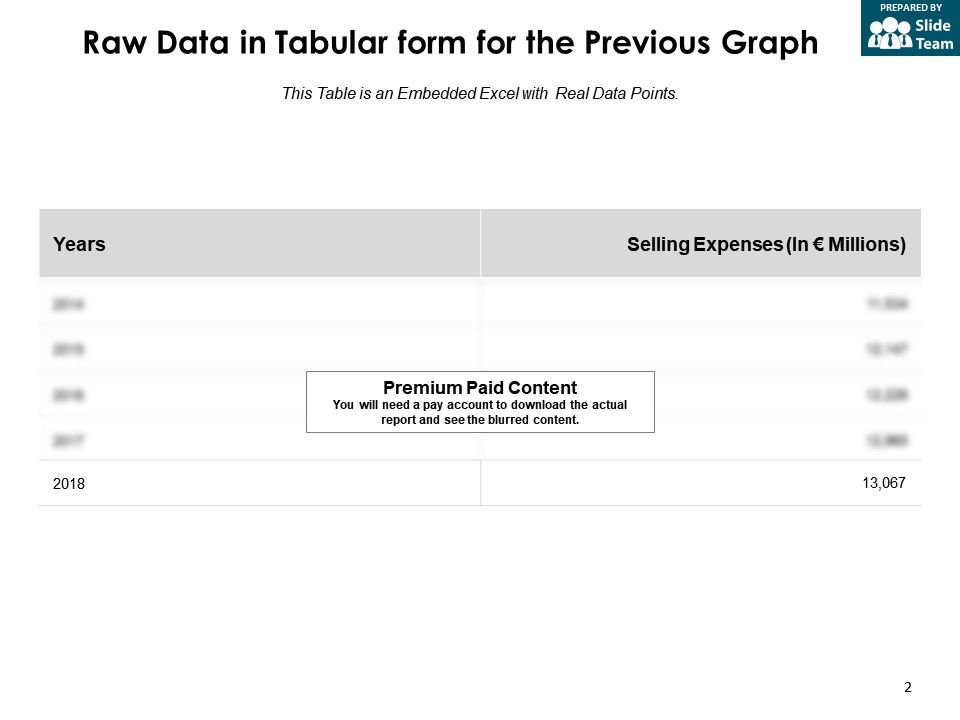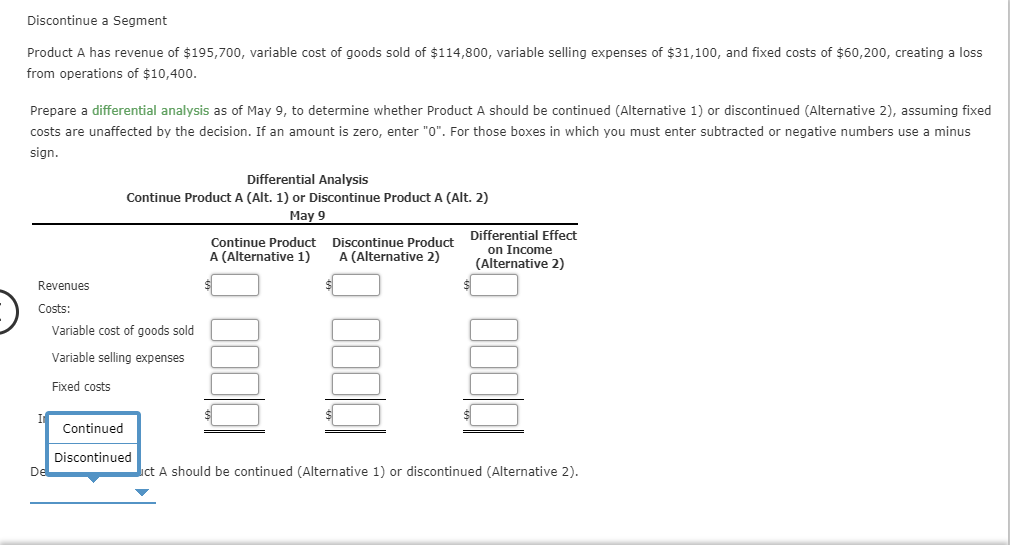Selling expense

Simply put, selling and administrative expenses are all the expenses not directly related to the production of a product. That includes the budgets of all non-manufacturing departments such as marketing, accounting, sales, engineering, and so on.
General and administrative expenses are all the expenses not associated with selling and not associated with making the product. These expenses include the overhead to run the main office, marketing, executive and support staff, and any distribution costs.
For example, a company’s marketing budget will certainly be reviewed independently of its engineering expenses. However, it could be useful to review marketing and sales expenses together as one group relative to sales or sales growth. These choices are at management’s discretion based on the company’s business model and objectives.
A poorly structured selling and administrative expense budget can affect not just tactics but also strategy. Managerial accounting is much more customizable than financial accounting, and therefore it can provide many more practical tools for managers. This includes personnel expenses and also everyday operating expenses such as insurance, supplies, travel and entertainment, rent, and payroll taxes.
Selling, General & Administrative (SG&A) Expense
An entity may utilize the sales-to-administrative ratio to gauge the portion of sales revenue attributable to covering administrative costs. Administrative expenses are the expenses an organization incurs not directly tied to a specific function such as manufacturing, production, or sales. These expenses are related to the organization as a whole as opposed to an individual department or business unit. Salaries of senior executives and costs associated with general services such as accounting and information technology (IT) are examples of administrative expenses.
However, since these costs are typically fixed, there is a limited ability to reduce them. Part of this process is subdividing the broad “selling and administrative” expenses into smaller, more useful subgroups.
Join PRO or PRO Plus and Get Lifetime Access to Our Premium Materials
Selling, General & Administrative Expense (SG&A) is an income statement item that includes all selling-related costs and expenses of managing a company. Because administrative expenses may be eliminated without direct impact on the product being sold or produced, they are typically the first expenses identified for budget cuts. There is strong motivation from management to maintain low administrative expenses relative to other expenses as an organization may utilize leverage more effectively with lower administrative costs.
Selling and administrative expensesappear on a company’s income statement, right under the cost of goods sold. Typical company expenses from accounting, legal, sales, marketing, facilities, and other corporate activities fall into this category. These costs may be fixed or variable; for example, sales commissions are a variable selling expense dependent on the level of sales the sales staff achieves. Selling and administrative expenses are both part of the selling, general and administrative (SG&A) expenses a company uses to operate. Even though they are part of the same income statement category, breaking these subcategories down gives business leaders insight for cost control measures.
These expenses are vital to a company’s success as they are incurred to increase efficiency or comply with laws and regulations. EBIT stands for Earnings Before Interest and Taxes and is one of the last subtotals in the income statement before net income. EBIT is also sometimes referred to as operating income and is called this because it’s found by deducting all operating expenses (production and non-production costs) from sales revenue. For example, a company that manufactures bolts spends more on raw materials and labor when producing 10,000 units compared to producing 5,000. However, salespeople work 40 hour weeks, so their salaries are paid regardless of sales level for a period.
When constructing a budget for variable expenses, it’s important to use a process that addresses costs that could increase or decrease depending upon the level of sales in a given time period. For example, sales commission expense varies each month based on the number of units sold. Operating income is an accounting figure that measures the amount of profit realized from a business’s operations, after deducting operating expenses such as wages, depreciation, and cost of goods sold (COGS). Operating costs are expenses associated with the maintenance and administration of a business on a day-to-day basis. The total operating cost for a company includes the cost of goods sold, operating expenses as well as overhead expenses.
A cleaning business uses detergents, sponges and cloths to provide services, so the products consumed in a month contribute to selling expenses. One of the areas where management has the most control, and therefore a key consideration of managerial accounting, is a company’s selling and administrative expenses. The allowance method is an accounting technique that enables companies to take anticipated losses into consideration in itsfinancial statementsto limit overstatement of potential income. To avoid an account overstatement, a company will estimate how much of its receivables from current period sales that it expects will be delinquent.
Analysts gather information to estimate the approximate variable costs per unit sold and use this to drive the monthly expense calculations for the variable cost budget. Because administrative expenses do not directly contribute to sales or production, there is a strong incentive for management to lower a company’s general and administrative expenses.
- Selling and administrative expensesappear on a company’s income statement, right under the cost of goods sold.
Because of this dynamic, a manager analyzing these numbers should make sure to distinguish between the company’s baseline fixed costs and the incremental variable costs that rise and fall over time. The variable expenses could be correlated to sales, to head count, or even to capital spending. A proper analysis must dive into this level of granularity to fully understand how the company’s strategy and tactics will influence its expenses.
What are examples of selling expenses?
Selling expenses are the costs associated with distributing, marketing and selling a product or service. Marketing costs such as advertising, website maintenance and spending on social media. Selling costs such as wages, commissions and out-of-pocket expenses.

That said, don’t underestimate the significance of these managerial decisions on how the company drives investor returns. How management decides to group and analyze its expenses implicitly defines how they view and understand the company. Management makes decisions based on the data they have available, and these managerial accounting decisions gives context to the data.
Defining Cost of Goods Sold
Managing this section of the income statement is a crucial component to running a successful business. General and administrative expenses typically refer to expenses that are still incurred by a company, regardless of whether the company produces or sells anything. This type of expense is shown on the income statement, typically belowcost of goods sold (COGS) and lumped with selling expenses, forming a selling, general and administrative expense line item. Information on this type of expense is especially useful when calculating a company’s fixed costs.
This portion of the budget includes the planned operating expenses for the business, excluding its directcosts of manufacturing. The company’s manufacturing costs get classified as “Cost of Goods Sold” and have their own category on the budgeted profit and loss statement. Selling and administrative expenses are typically a huge line item on a company’s income statement. It includes most every expense the company incurs not directly related to the production of its products. Whether a company wants to grow, cut costs, or simply maintain what it’s doing, managers must pay close attention to this figure and all its component parts.
You would normally report selling expenses in the income statement within the operating expenses section, which is located below the cost of goods sold. Gross profit is the direct profit left over after deducting the cost of goods sold, or “cost of sales”, from sales revenue. It’s used to calculate the gross profit margin and is the initial profit figure listed on a company’s income statement.
Selling and administrative expenses even include non-cash expenses such as depreciation and amortization. Similar to fixed expenses, we have little control over periodic expenses but where fixed expenses typically recur on the same date every month, periodic ones are what I call “expected surprise” expenses. It sounds like an oxy-moron to have an “expected surprise” but I am sure you have all been there.
As you can probably tell already, selling and administrative expenses are a bit of a mixed bag. They include highly variable expenses such as marketing as well as mostly fixed expenses such as rent.
Typically, any cost that does not link to the production or the selling process and is not part of research and development is classified as a general and administrative expense. As a result, general and administrative expenses do not fall under cost of goods sold and are not inventory. General and administrative expenses are also typically fixed costs in nature, as they would stay the same regardless of the level of sales that occur.
To prepare a budget, a company must first decide on the unit of time to use. A budget calculated on a monthly basis usually has a good level of detail factored into it, while some companies prefer a higher-level quarterly-basis budget. Since some of the company’s expenses vary with sales, the projected number of units to be sold becomes the budget’s starting point.
The Income Statement is one of a company’s core financial statements that shows their profit and loss over a period of time. Selling expenses, often called cost of goods sold, refer to costs and purchases needed to create products or deliver services for which consumers pay your small business money. The difference between sales revenue and sales expenses determine gross profit, from which overhead is deducted to calculate net profit. Most businesses figure out selling expenses monthly, but it can also be done weekly or quarterly. If the rented space was used to manufacture goods, the rent would be part of the cost of the products produced.
The sales method applies a flat percentage to the total dollar amount of sales for the period. For example, based on previous experience, a company may expect that 3% of net sales are not collectible. If the total net sales for the period is $100,000, the company establishes an allowance for doubtful accounts for $3,000 while simultaneously reporting $3,000 in bad debt expense. If the following accounting period results in net sales of $80,000, an additional $2,400 is reported in the allowance for doubtful accounts, and $2,400 is recorded in the second period in bad debt expense. The aggregate balance in the allowance for doubtful accounts after these two periods is $5,400.
Companies look at the selling expenses in comparison to other administrative expenses to determine if the company is properly utilizing resources for staff and marketing. A company’s master budget profit and loss statement include these expenses along with sales revenue, cost of goods sold, and other expenses, such as interest and depreciation. The selling and administrative expense budget makes up part of a company’s pro forma, or budgeted, profit and loss statement.
Bad debt expenses are generally classified as a sales and general administrative expense and are found on the income statement. Recognizing bad debts leads to an offsetting reduction to accounts receivable on the balance sheet—though businesses retain the right to collect funds should the circumstances change. An efficiently run company maximizes production and sales output in relation to operating expenses, both of which include the sales and administrative costs. When output exceeds what the sales team is selling, either production needs to be slowed or changes must be made to generate more sales and reduce overhead until the company finds an operating balance point. On the income statement, administrative expenses are listed below cost of goods sold and may be shown as an aggregate with other expenses such as general or selling expenses.